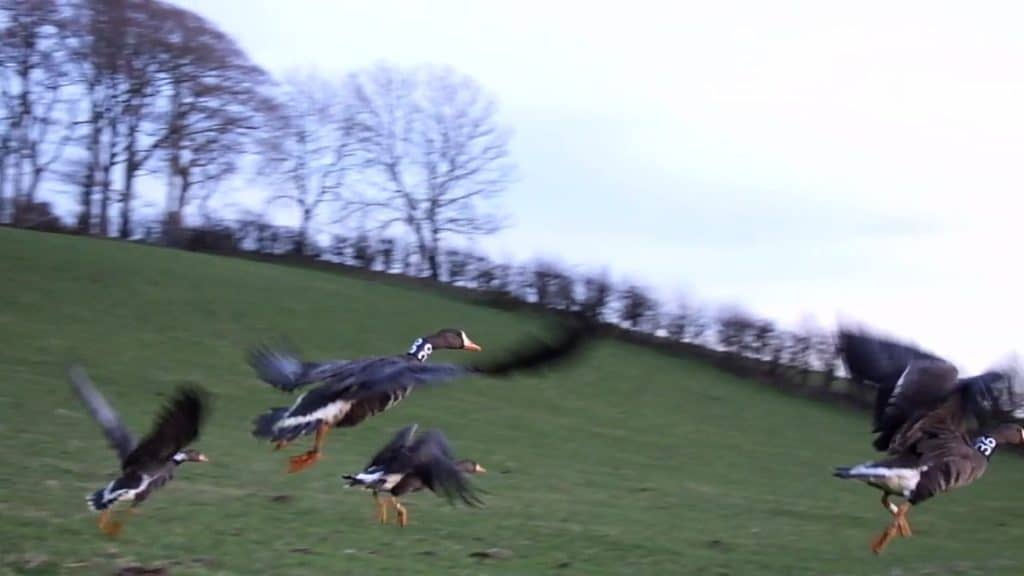A project is underway to follow the lives of rare geese that over-winter in Dumfries and Galloway, in an attempt to learn more about their movements.
The project, which is funded by Heritage Lottery Fund (HLF) for two-and-a-half-years through the Galloway Glens Landscape Partnership, has involved putting GPS trackers on two Greenland white-fronted geese on a farm near Loch Ken.
The collars are designed to fit round the neck and are lightweight, just 30g, so as not to disrupt behavior. They update every three hours and enable scientists to gather much more information about the geese than would be possible with traditional survey work. This includes details of where birds are feeding, resting and roosting, as well as the routes of their recent migrations to summer breeding grounds in Greenland.
Lynda McQueen, who farms on the National Trust for Scotland’s estate at Threave, hosted the collaring and release of birds. She said: “We were delighted to take part in this project and it was a unique experience helping with the release of birds on our farm after the collars had been fitted. It was great to see them on our farm over the winter and I have really enjoyed following their progress on the WWT website. I see some birds are in Greenland now and I look forward to watching their return next autumn”.
Greenland white-fronts are medium-sized geese, with a large white patch around their beaks and bold black bars on their bellies. They are a red-listed bird, which is the highest conservation priority, and are globally near-threatened.
Dumfries and Galloway hosts two important wintering flocks, one at Loch Ken near Castle Douglas and the other at West Freugh near Stranraer. Numbers around Loch Ken gradually increased from about 300 birds to around 350 from the late 70s to the late 80s, but since then the flock has declined to under 200 birds in recent years.
Julia Gallagher, Conservation Officer for RSPB Scotland, who manages the project, said: “It’s been an interesting few months since the geese were tagged in December, following their movements, and learning so much about them. Unfortunately, we’ve just learnt that we’ve lost one of the geese on migration on its way to Iceland. It was very late in starting the journey and only departed Loch Ken as other birds were already on their way to Greenland. This meant that it would not have enjoyed the protection of travelling in a larger flock, which may have left it more vulnerable to predation.
“But thankfully, goose number 38 has successfully arrived in Greenland, and in fact, was one of the first to arrive in early May.
“I will be using the data we collect from the collars and working closely with local farmers to see how we can best manage and safeguard goose habitat alongside every day farming activities. We will also be inviting local schools to share in the story of our birds.”
Greenland white-fronts arrive in Scotland in October each winter and depart for Greenland via a staging stop at Iceland in early April. In the winter, they require suitable pasture or stubble fields that allow them access to feed on roots and shoots. They roost at night on water bodies such as local lochs.
You can follow the movements of our birds and other tagged birds on: http://tracking.wwt.org.uk/maps/whitefront
The project will be fitting two more collars to birds in autumn 2019.





